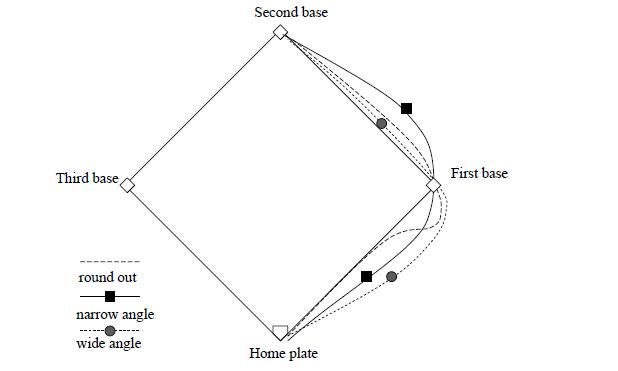Woodward (1970) conducted an experiment to determine the fastest path to second base in baseball. The three
Question:
Woodward (1970) conducted an experiment to determine the fastest path to second base in baseball. The three paths investigated were the round-
out, narrow angle, and wide angle shown in the gure below. The best path is dened to be the one that minimizes the time to reach second base.
He used a stopwatch to time a runner going from home to second. He started the watch when the runner crossed a point 35 feet from home plate and stopped the watch at a point 15 feet short of second base. This eliminated the variability in times caused by stopping and starting. Finally, he timed a random sample of 22 dierent runners, so that his conclusions could be generalized to all runners. In addition, after an appropriate rest period, he had each runner take each path (in a random order). In that way he could use the runners as blocks and eliminate the runner-to-runner variability from the error. The data is shown in the table below.
(a) What is the appropriate model for this data?
(b) Complete the ANOVA and determine if there are any signicant dier-
ences among the three paths.
(c) Use an appropriate multiple comparison procedure to determine what paths are dierent from each other.
(d) Was blocking eective in this experiment? Why or why not?
(e) Use residual plots to check the assumptions for the model you t. If the assumptions do not hold, what would you recommend doing?
Step by Step Answer:

Design And Analysis Of Experiments
ISBN: 9780471661597
6th International Edition
Authors: Douglas C. Montgomery






